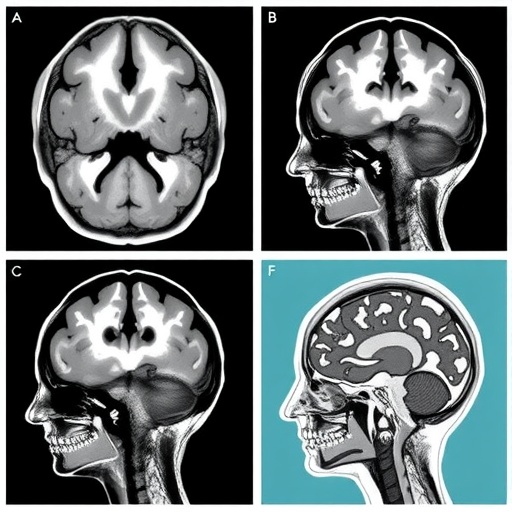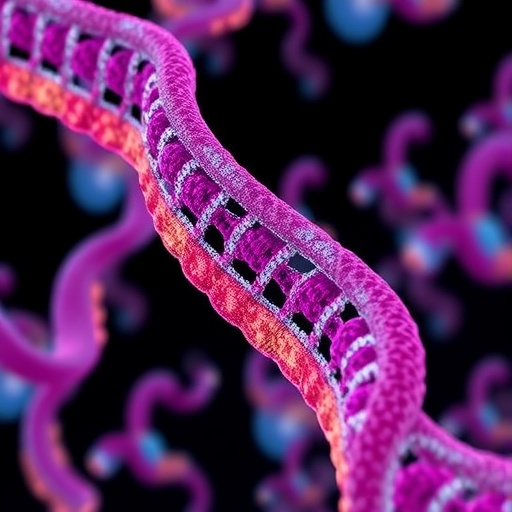In the continually evolving landscape of forensic science, age estimation remains a pivotal challenge, especially when it involves adolescents whose skeletal development varies widely due to genetic, environmental, and ethnic factors. A groundbreaking study recently published in the International Journal of Legal Medicine spearheads advancements in this domain by harnessing magnetic resonance imaging (MRI) and applying it to the nuanced context of the Southwestern Chinese Han population. This research leverages the Dedouit classification system to enhance the accuracy and reliability of forensic age determination using knee joint imagery—a methodological leap that promises to refine age estimation protocols worldwide.
Age estimation is indispensable not only in legal medicine but also in criminal investigations, immigration cases, and human rights proceedings where chronological age is contested or unknown. Traditional methods, including physical examination, dental assessment, and radiographic imaging of hand and wrist bones, have limitations. These techniques often lack precision in late adolescence due to the near completion of ossification in commonly examined sites. This new study addresses these challenges by focusing on the knee joint, a skeletal structure that exhibits distinct developmental markers well into adolescent years.
Central to this innovative approach is the application of the Dedouit classification system, an established radiological framework that categorizes the stages of epiphyseal fusion visible on MRI scans. The study conducted a comprehensive analysis of adolescents from the Southwestern Chinese Han population, a group with unique genetic and environmental backgrounds that influence skeletal maturation rates. By doing so, the researchers provide population-specific data that are crucial for contextualizing forensic findings, as global skeletal maturation standards may not apply uniformly across different ethnic groups.
.adsslot_vjCwm4U2p7{ width:728px !important; height:90px !important; }
@media (max-width:1199px) { .adsslot_vjCwm4U2p7{ width:468px !important; height:60px !important; } }
@media (max-width:767px) { .adsslot_vjCwm4U2p7{ width:320px !important; height:50px !important; } }
ADVERTISEMENT
MRI technology plays a critical role here, offering high-resolution images without the ionizing radiation risks associated with conventional radiographs or CT scans. The soft tissue contrast inherent in MRI allows for detailed visualization of cartilage, growth plates, and ossification centers, enabling forensic experts to distinguish between subtle maturation stages with unprecedented clarity. This non-invasive approach is particularly vital in forensic settings where ethical considerations and minimizing harm are paramount.
The study meticulously categorized knee MRI images from adolescents aged between 12 and 18 years, focusing on key anatomical structures including the distal femoral and proximal tibial epiphyses. These regions undergo progressive changes as growth plates fuse, signaling the transition toward skeletal maturity. Through the Dedouit classification, the researchers delineated multiple stages, correlating each with chronological age to establish reference benchmarks for the population studied.
The implications of this study are profound for forensic practitioners, as it expands the toolkit available for adjudicating age disputes with enhanced precision. In contexts such as unaccompanied migrant minors or juvenile justice proceedings, determining accurate age has significant legal and social consequences. The validated use of knee MRI and Dedouit classification can reduce reliance on subjective assessments and increase the defensibility of forensic age reports in court.
Moreover, this research sets a new standard for multi-disciplinary collaboration, integrating radiology, forensic science, anthropology, and population health. By combining imaging science with demographic specificity, the team demonstrates a model for future forensic research that prioritizes both technological innovation and sociocultural relevance. This holistic perspective is essential for producing data that are scientifically robust and legally admissible.
The study also addresses technical challenges inherent in MRI-based age estimation. Variations in scanner protocols, image resolution, and observer interpretation can influence classification outcomes. To mitigate these issues, the researchers employed stringent imaging parameters and implemented double-blind evaluations with multiple radiologists to ensure consistency and reproducibility. This methodological rigor adds credibility to their findings and sets benchmarks for subsequent studies.
In addition to practical forensic applications, the research contributes fundamentally to skeletal biology by illuminating the patterns of knee maturation in adolescence. The knee joint, often overshadowed by more commonly studied sites like the wrist, proves to be a rich source of developmental information. Such insights could have further implications in pediatric medicine, orthopedics, and growth disorder diagnostics.
The study’s emphasis on a Han Chinese population from Southwestern China is particularly timely, given the demographic shifts and growing demand for forensic expertise in Asia. Tailored forensic age estimation protocols help address regional legal needs sensitively and accurately. The researchers advocate for expanding this approach to other ethnic groups and geographical regions, encouraging the development of comprehensive, globally representative skeletal maturation databases.
Future research inspired by these findings may explore the integration of artificial intelligence and machine learning algorithms with MRI data to automate Dedouit classification. Such advancements could further standardize age estimation and reduce inter-observer variability. Additionally, longitudinal studies tracking individual skeletal development through adolescence could refine predictive models and enhance forensic precision.
In synthesis, this study marks a significant leap forward in forensic age estimation, marrying cutting-edge imaging technology with population-specific research. Its contributions resonate beyond forensic circles, touching on legal rights, medical ethics, and social justice wherever age documentation is contested. As the forensic community absorbs and applies these findings, enhanced accuracy and fairness in age-related adjudications are within reach.
The pioneering work of Deng, Leng, Fan, and colleagues exemplifies how nuanced, culturally informed forensic science can pave the way for equitable and scientifically valid outcomes. Their meticulous efforts not only refine a critical forensic technique but also inspire future innovation bridging radiology and legal medicine on a global scale.
Subject of Research: Forensic age estimation of adolescents using knee MRI and Dedouit classification in the Southwestern Chinese Han population.
Article Title: Forensic age estimation using Dedouit classification in adolescents of the Southwestern Chinese Han population based on the knee MRI.
Article References:
Deng, XD., Leng, Q., Fan, F. et al. Forensic age estimation using Dedouit classification in adolescents of the Southwestern Chinese Han population based on the knee MRI. Int J Legal Med (2025). https://doi.org/10.1007/s00414-025-03566-3
Image Credits: AI Generated
DOI: 10.1007/s00414-025-03566-3
Keywords: Forensic age estimation, Dedouit classification, knee MRI, adolescent skeletal maturation, Han population, forensic radiology, epiphyseal fusion, skeletal development
Tags: accuracy in age determination techniquesadolescent age determination methodsDedouit classification systemforensic age estimationforensic science and human rightsknee joint imagery in age estimationlegal medicine advancementslimitations of traditional age estimationmagnetic resonance imaging in forensicsossification and skeletal markersskeletal development variationsSouthwestern Chinese adolescents





